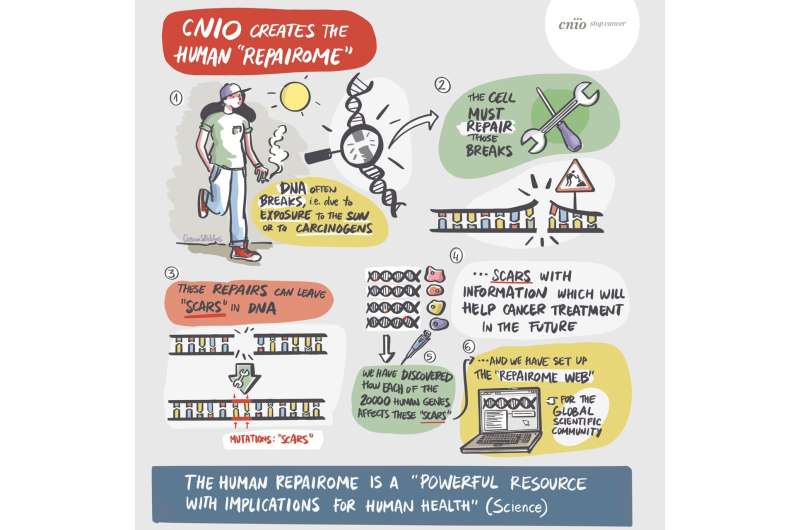A research group at the CNIO has identified the 20,000 types of scars that remain in repaired human DNA after a break. They have subsequently organized them on a website, the human REPAIRome portal, available to the global scientific community. The human repairome is thus the catalog of scar patterns in repaired human DNA.
This information is valuable as basic knowledge, but also from a medical perspective. For example, being able to interpret the pattern of scarring in a patient’s tumor cells can help determine the best treatment for each cancer type.
“It is an ambitious piece of work which we hope will become a truly useful resource in cancer research and also in clinical practice,” says Felipe Cortés, head of the CNIO’s DNA Topology and DNA Breaks group and lead author of the paper.

